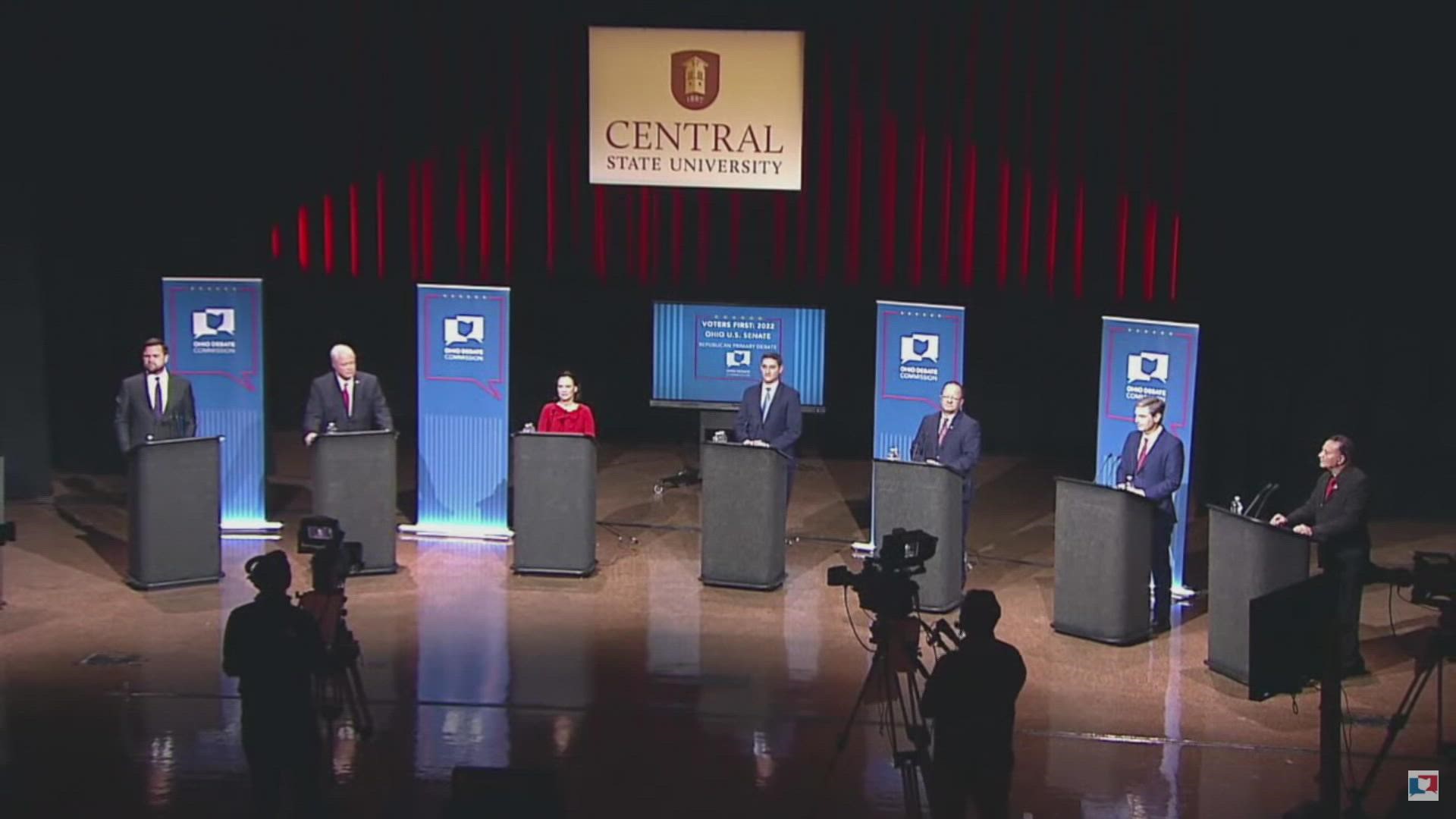COLUMBUS, Ohio — A federal court panel on Wednesday decided not to delay Ohio's May 3 primary — for now.
The three-judge panel of the U.S. District Court for the Southern District of Ohio reserved the right to intervene — perhaps by moving the primary to Aug. 2 — if the state doesn’t resolve its redistricting chaos by April 20. Legislative and congressional maps that were supposed to be finalized last year are still tied up in the Ohio Supreme Court.
During an hourslong hearing Wednesday, judges asked top Ohio elections officials for help determining whether to delay the primary and floated numerous alternatives to a May 3 primary — from using the state's 2010 map to imposing an third map that's been found unconstitutional to having a special master draw brand-new maps
The primary, one of the first high-profile nominating contests of the year, is in limbo after the state Supreme Court ruled repeatedly that maps drawn by the Republican-dominated Ohio Redistricting Commission were unconstitutional. Democrats responded by seeking to delay the primary to give time to rewrite maps in a way that could be used this year, when control of Congress hinges on just a few seats.
Republicans in the Legislature have insisted on maintaining the May 3 date, even though that now means it will not include contests for legislative districts whose lines are still undetermined. A group of GOP voters had asked a federal court to order one of the unconstitutional maps to be used for legislative races and move forward with the May 3 primary.
By Wednesday, the sense of frustration surrounding the proceedings was palpable. At one point, the panel of U.S. District Court judges pleaded with Ohio’s top elections officials to take a position on whether the primary should go forward as planned.
“We’re used to people coming to this court of redress to tell us what they want,” U.S. District Court Chief Judge Algenon Marbley told Jonathan Blanton, the lawyer for GOP Secretary of State Frank LaRose.
The hearing broke to allow Blanton to call LaRose for advice on how to proceed. He returned to say that LaRose’s preference would be for a single primary on May 24 using the third set of maps, which has already been declared unconstitutional. But that did little to resolve the issue as the federal judges questioned whether they had the power to consolidate the primary.
Judge Amul Thapar suggested that the federal court may need to simply impose existing 2010 Ohio House and Senate maps for one more election cycle. But, later in the day, California Polytechnic State University political scientist Michael Latner, an expert witness, testified that those boundaries are "among the worst gerrymandered in the country.”
With many states having already completed the once-a-decade redistricting process, Ohio is one of the final puzzle pieces in determining the political maps that will be used in this year’s midterms. That has added to a sense of urgency in both parties to try to squeeze an advantage out of the mapmaking. Its congressional map fight has, for now, been pushed past the May 3 primary — but a ruling in the federal case has the potential to change that, too.
But in the meantime, all the legal wrangling has essentially left Ohio’s primary in a state of suspended animation, with voters and candidates alike unclear of what day the election will be held. There’s not much time left for a smooth resolution as early voting is supposed to begin on April 5.
Complicating matters for the three judges as they consider the third set of maps is that there's since been a fourth set of maps approved. It was challenged Tuesday as an unconstitutional gerrymander in the Ohio Supreme Court.
The Ohio Redistricting Commission has been given until Monday to defend itself against allegations of contempt of court, after voting rights and Democratic groups complained its fourth map was drawn in clear violation of what the court ordered after the third map was rejected.
As the U.S. District Court panel considered an alternate timetable for the primary, Deputy Assistant Secretary of State Amanda Grandjean, who directs Ohio's elections, said that Ohio's 88 county boards of elections needed a minimum of 74 days to administer an election.
That includes 60 days for public-facing processes, such as candidate declarations and ballot production, and 14 days for behind-the-scenes work to program equipment to reflect the new maps.
Ohio law typically allots 90 days from the filing deadline to Election Day. However, state lawmakers passed a bill amid all the redistricting uncertainty that allowed LaRose to unilaterally override certain administrative deadlines for just this year. He is prohibited by law from rescheduling the primary — only lawmakers or, if they fail, the courts can do that.
Grandjean agreed with the GOP voter group that the third set of maps should be used despite being ruled unconstitutional. She told the judges that it would be the “easiest” one for boards to implement at this late date.
Attorneys for voting rights groups that are challenging the legislative maps argued that the federal court is barred from imposing maps that the state court has ruled illegal. That raised the question of whether the federal court might ultimately draw its own legislative maps.
Their witnesses said alternative legislative maps proposed by a pair of independent mapmakers were constitutional and superior to all previously approved plans. Republicans on the Ohio Redistricting Commission declined to consider those in favor of adopting their own fourth plan Monday. The panel was told Wednesday that those mapmakers could create new maps within 5 1/2 days — or less, if they were appointed special masters in the federal case.

